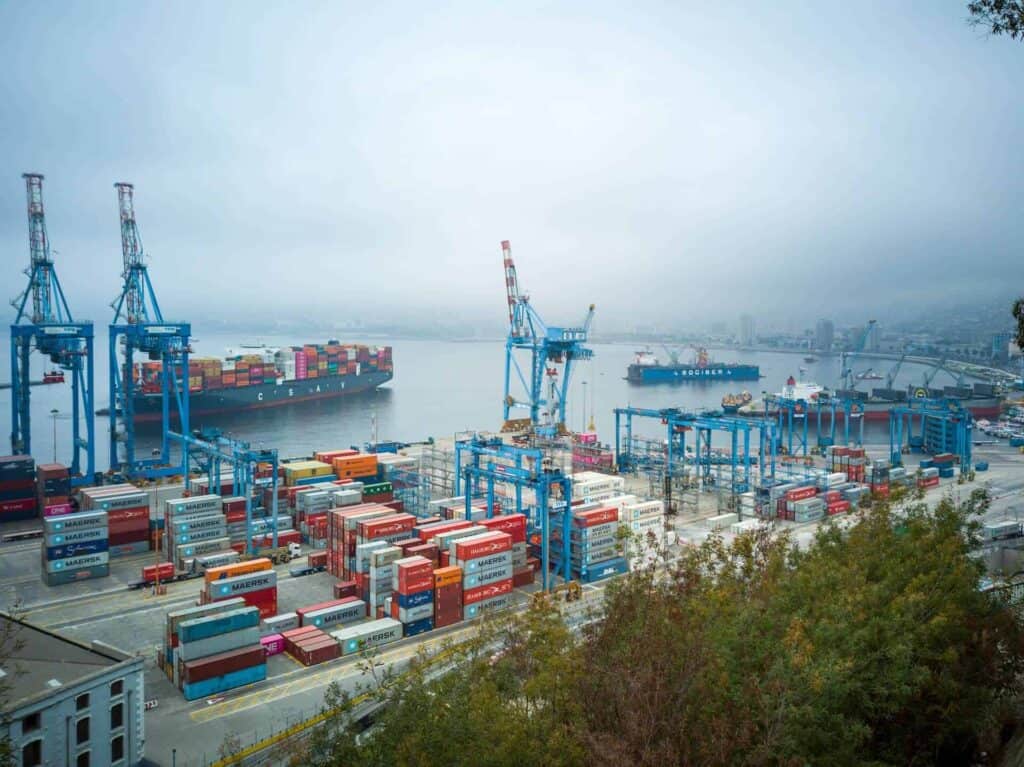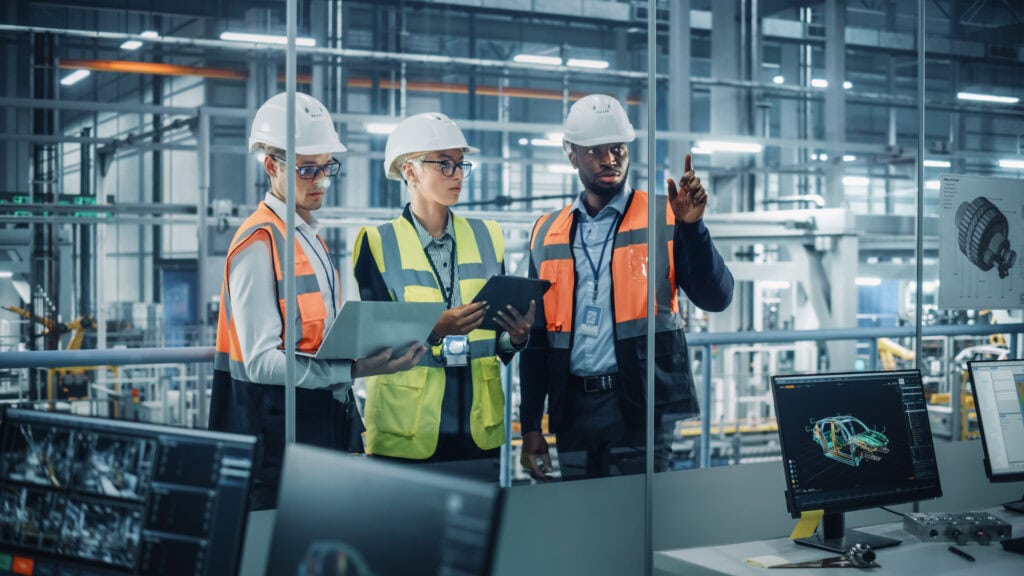When you think about manufacturing, what comes to mind? Perhaps it’s the hum of machinery or the intricacy of assembly lines. However, beyond these familiar sights and sounds, the global environmental, social and governance (ESG) movement is vastly reshaping the industry’s traditional image. ESG has become a top priority in boardrooms across the world, meaning that manufacturers are increasingly turning to eco-friendly practices and technologies to respond to mounting pressure for compliance.
When considering which technologies to invest in, there are two main categories for leaders to take note of: “clean technology” and “end-of-pipe technology.” While both aim to mitigate environmental impact, they are significantly different approaches. Understanding the strengths and limitations of each is crucial for manufacturers striving to balance operational efficiency with their environmental credentials.
What is the difference between cleantech and end-of-pipe technology?
Cleantech is like a car running on solar power, while end-of-pipe technology is akin to installing a high-tech exhaust on an old, emission-heavy car. Cleantech is proactively designed to prevent pollution before it occurs. Renewable energy sources like solar and wind power are classic cleantech solutions that reduce reliance on fossil fuels and cut greenhouse gas emissions. Similarly, energy-efficient appliances and electric vehicles fall in the same category.
Whereas end-of-pipe technology focuses on treating or managing pollution after it has been generated, i.e. pollution control technologies that capture pollutants before they are discharged. For example, scrubbers that clean exhaust gases or wastewater treatment facilities that manage effluents are classified as end-of-pipe solutions.
Evaluating effectiveness: Clean technologies vs. end-of-pipe solutions in manufacturing
Clean technologies prevent environmental damage and reduce pollution, often positioning them as a superior choice compared to end-of-pipe solutions. Yet, end-of-pipe technologies also carry merit; they are crucial for meeting regulatory standards, and can often be conveniently added to existing production processes and systems.
A recent study, Are Clean Technologies More Effective Than End-of-Pipe Technologies? Evidence from Chinese Manufacturing, examines the role of clean technologies (like solar and wind) and end-of-the-pipe technologies (like pollution control systems), evaluating their effectiveness. The study highlighted the impact of such technologies on a manufacturer’s performance.
The research featured a sample of Chinese manufacturers listed on the Shanghai and Shenzhen exchanges across several years (2011 to 2018). The study shows that end-of-pipe technologies, which treat pollution after it’s created, and cleantech, which prevents pollution, can jointly boost a company’s business performance – but in different ways.
Manufacturers can implement end-of-pipe technologies as incremental innovations without altering the production process, arguably making these technologies easier to adopt. Further, the study says that end-of-pipe technologies can improve a company’s chances of receiving a green credit, leading to opportunities to access financing at lower costs.
As a result, businesses may improve their performance due to lower financing costs and greater access to financial incentives associated with their environmentally friendly practices. This often offsets the costs of implementing these technologies.
However, when it comes to consumer preferences, end-of-pipe technologies don’t perform as well. According to Deloitte, Gen-Z and millennial consumers gravitate towards brands that prioritise environmental sustainability and feel strongly that protecting the environment is an area where businesses can drive change. With this in mind, end-of-pipe technologies could be seen as less impactful compared to proactive green solutions by these generations and all consumers.
So, while end-of-pipe technologies may offer manufacturers financial benefits, they might not always translate into a strong market advantage if they aren’t aligned with consumer values.
Striking the balance
It is important for leaders to have all the facts in front of them when they are making decisions about which technologies to adopt. They also must visualise their future roadmap to identify what strategy will best suit their business now and tomorrow. As regulations become stricter and the market demands for sustainability increase, relying solely on traditional end-of-pipe solutions risks leaving manufacturers behind.
To avoid this, manufacturers need to take two important steps. First, they should evaluate their current operations. Second, they need to consider their future goals to determine the best path towards creating an environmentally friendly operation. Leveraging tools such as the Consumer Sustainability Industry Readiness Index (COSIRI) empowers manufacturers on their ESG journey, effectively addressing and bridging critical gaps.
COSIRI helps organisations evaluate and improve their environmental strategies by providing insights into the effectiveness of their current technologies and identifying opportunities for more impactful solutions. By incorporating such assessments, manufacturers can better align their practices with both market expectations and regulatory demands, paving the way for a more sustainable business performance.
Frequently Asked Questions About Cleantech vs. End-of-Pipe
What is End-of-pipe Technology?
End-of-pipe technology refers to pollution control systems that treat waste, emissions, or pollutants after they have been created in the manufacturing process. It is used to reduce environmental impact before discharge.
What is End-of-pipe Treatment?
End-of-pipe treatment is the process of removing or reducing harmful substances from industrial waste, air, or water after production. It includes filters, scrubbers, and chemical treatments to meet environmental standards.
What is Cleaner Technology?
Cleaner technology, also known as cleantech, refers to environmentally friendly technologies used to reduce waste and pollution at the source. It improves efficiency and sustainability throughout the production cycle.
What is the Difference Between Cleaner Production and End-of-pipe Technology?
Cleaner production focuses on preventing pollution at the source through better processes and materials, while end-of-pipe technology deals with treating pollution after it is created. Cleaner production is proactive; end-of-pipe is reactive.
Why is Cleaner Technology Important for Manufacturers in 2025?
Cleaner technology is important for manufacturers in 2025 because it supports sustainability goals, reduces environmental impact, and aligns with stricter ESG regulations. It also helps companies remain competitive and energy-efficient.
How Does End-of-pipe Treatment Affect Environmental Sustainability?
End-of-pipe treatment improves environmental sustainability by reducing the harmful effects of industrial waste. However, it is less effective than cleaner production because it does not prevent pollution at its source.
What Are Some Examples of Cleaner Technology in Manufacturing?
Examples of cleaner technology in manufacturing include energy-efficient machines, closed-loop water systems, low-emission materials, renewable energy integration, and zero-waste production lines.
Which is More Cost-effective: Cleantech or End-of-pipe Solutions?
Cleantech is often more cost-effective in the long term because it reduces energy use, raw material waste, and compliance costs. End-of-pipe solutions may have lower upfront costs but higher maintenance and operational expenses.


